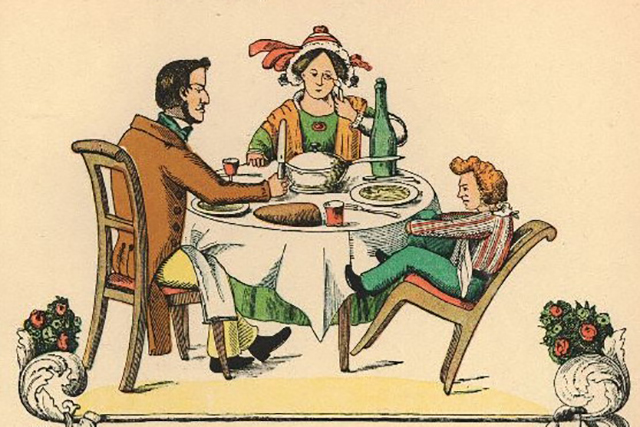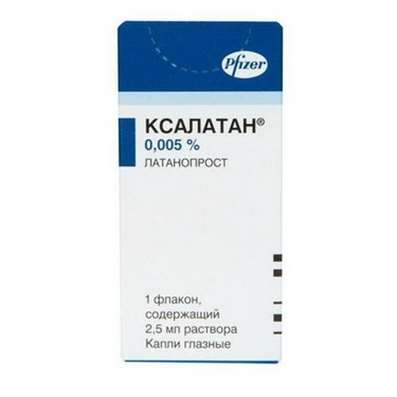Syndrome of attention deficit and hyperactivity (ADHD)
25 Dec 2017
Why children with ADHD worse learn whether the syndrome to appear in adulthood and how to educate according to the method of "carrot and no stick"

Problems in the study of hyperactivity at children excited doctors and teachers from the mid-nineteenth century. In 1845 by German physician Heinrich Hoffmann in poetic form described extremely cheerful kid and gave him the nickname "fidget Philipp".
The subject of intense study of physicians, the disease began in the early twentieth century. In 1902 in the Lancet appeared lecture the English physician George Frederic still, which he previously spoke to the doctors of the Royal Academy. The author has linked hyperactivity with a biological basis, not bad parenting, as tacitly assumed in those days.
History of the term
In 1980 in the classification of DSM-I (Diagnostic and statistical manual of mental disorders) were the terms "attention deficit disorder" — Attention Deficit Disorder (ADD) and his kind of "attention deficit disorder with hyperactivity" — Attention Deficit Disorder with Hyperactivity (ADD+H).
It should be noted the research of canadian author Virginia Douglas (1980, 1983), who put forward the theory of "four major deficiencies" of the disease: 1) a reduced ability to hold the attention, 2) a weak inhibition of impulsive behavior, 3) the weakness of the modulation level of an activating effect, 4) an unusually strong inclination to delayed reward.
The symptoms of ADHD
Clinical manifestations of the disease are defined by three main symptom groups: inattention, hyperactivity and impulsivity.
Carelessness. Speaking of ADHD, often mean increased distractibility and reduced concentration. In children with ADHD there is a lack of continuous (supported) attention, which is manifested in the impossibility of a long-running uninteresting tasks. When you do this something interesting for them (for example, computer games, watching cartoons) they can do for hours. In addition, there is a lack of selective attention, which is manifested in increased distractibility to extraneous stimuli, especially if these incentives are bright and interesting. So, drove in the yard the car makes to look out the window and long to distract from homework. Often also reduced attention switching.

Hyperactivity. Under the hyperactivity in ADHD children are usually aware of the increased motor (motor) activity. Parents complain: it seems that to the child connected the motor. Children with ADHD are unable to sit during a lesson. When a child comes into a doctor's office, there is concern for the state in the Cabinet office equipment: computer, monitor, printer. In contrast to the energetic kids activity in children with ADHD is purposeless in nature. Unfortunately, hyperactivity sometimes leads to emergence of injuries in children.
Impulsivity. Under the impulse understand the inability to control their impulses. Impulsive children cannot wait for their turn at the game. In the training situation these children experience "impulsive style of work": they shout out answers in the classroom, not answering them fully, interrupting other students or the teacher. Because impulsive children often find themselves in dangerous situations without thinking about the consequences. Risk tolerance becomes a cause of injuries and accidents.
ADHD is classified as a multifactorial developmental disorders, thus you should always keep in mind the possible impact of several factors influencing at each other. Among the causal factors of ADHD in the first place distinguish genetic and perinatal factors.
Great importance is attached to the gene of the dopamine receptor D4 (DRD4) gene and the dopamine Transporter (DAT1). These features define the decline in the functioning of the dopaminergic neurotransmitter system of the brain.
It is interesting to note that ADHD is more common in twins, brothers and sisters. The risk of ADHD to relatives of patients suffering from this disease was about 30%. ADHD is more common among children born prematurely. Of particular importance for the formation of ADHD among perinatal factors is maternal Smoking during this pregnancy. In addition, it should be said about the role of anxiety disorders in the mother during pregnancy.
Our study showed a high level of anxiety in mothers of children with ADHD (Chutko L. S., Surushkina S. Yu., Anisimova T. I., 2017). Alarm wore a protracted nature, while more than half of the cases with an anxiety disorder appeared prior to the birth of a child with ADHD. This fact and the very high level of personal anxiety allowed us to think that we are dealing with the property of the person, not just a reaction to the behavior of the child with ADHD. Although, in turn, violation of social adaptation and learning difficulties associated with ADHD in the child, contribute to the emergence of a secondary anxiety in the mother.
It should be mentioned that anxious mothers tend to improper parenting styles, such as Hyper or over-critical. They can also contribute to the development in children how anxiety disorders and ADHD. The parents of a child with ADHD themselves with this disorder often have a parenting style characterized by lack of restraint and violate the interaction with the child.
Types of ADHD
Traditionally distinguish ADHD with predominance of inattention (ADHD-H) and combined type of the disease. The last type is more common. Children with ADHD-N the impression of lethargic, sleeping on the go. They are slower than their peers perceive the information, worse remember. These children give the impression of a sleepy, timid, shy, and apathetic.
The results of our studies allowed us to distinguish two functional forms of ADHD: simple and complicated. A simple form was characterized by "the title" symptoms: inattention, hyperactivity, impulsivity. Complicated form is characterized in that the above symptoms were joined by secondary symptoms: tics, headaches, stuttering, phobic disorders.
Treatment of attention deficit disorder
In the United States and Europe, the most widely used treatment for ADHD psychostimulant agents (non-RF). The effect of psychoactive funds is based on the increase in the content of dopamine and norepinephrine. Despite the large number of studies on the use of psychostimulants in the treatment of ADHD, the issue continues to be accompanied by a discussion of the likelihood of side effects.
In Russia for the treatment of ADHD traditionally used nootropic agents. Under nootropic drugs understand drugs, positive impact on higher integrative functions of the brain, the main manifestation of which is the improvement of learning and memory when their violations. When comorbid ADHD anxiety disorders, tics it is possible to use tranquilizers.
It is generally accepted thesis according to which the treatment of ADHD should be comprehensive, i.e. include both medicamentous therapy, and psychotherapeutic methods. The leading link in psychocorrection of children with ADHD is to change the behavior of adults parents and teachers replacement of non-adaptive approaches to their children in the adaptive training of parental competence.
To change (modify) the behavior of children using methods of behavioral therapy based on operant approach (in operant conditioning). The main principle of such therapy — reward (tangible reinforcement) a child for desired behavior and punishment for wrong. We recommend to speak not so much about punishment, how many about lack of encouragement, that is not a "carrot and stick" and "carrot and no stick".
Parents should establish a system of incentives. As a "carrot" there may be cafes, computer games, viewing of telecasts, pocket money. The unconditional factor improvement — the creation of positive models of relationships to the child. The other extreme in relation to such children is permissiveness, therefore parents have to explain to your child the rules of conduct.
We developed a method of treatment of children with ADHD using transcranial micropolarization — therapeutic application of direct (galvanic) electrical current of small force on brain tissue. The method of micropolarization transcranial (TDCS...) was developed in the Institute of experimental medicine in Leningrad 70-80-ies of XX century.
TDCS ... mechanism is the directed activation nonspecific the activating systems of the brain and the intensification of the processes of morpho-functional development of unripe elements of bark owing to normalization of neurodynamics, that is, reduction of functional immaturity of the brain. Currently, TDCS ... widely used in children for the treatment of mentally retarded, autistic disorders, correction of speech disorders. This treatment allows in the substantial absence of undesirable side effects aimed to change the functional state of the brain.
ADHD in adults
The syndrome of attention deficit and hyperactivity disorder (ADHD) in adulthood is seen as a consequence of developmental disorders of the nervous system in children, in adults first appear. This disorder occurs in 2-6% of adults in the population.
Adults with ADHD are disorders of attention, impulsivity, emotional lability, low stress tolerance. Adult patients with ADHD have a higher incidence of accidents, change jobs, divorce. They also often suffer from addictive disorders than their healthy peers. A number of authors describe the memory impairments in adults with ADHD. It is known that patients with ADHD are less likely to receive a higher education. As you might expect, they tend to occupy lower professional positions.
Current research ADHD
In Russia, studies in this direction are in the Center of behavioural neurology of Institute of human brain (St.-Petersburg), at the Department of pediatric neurology rnsmu. Pirogov (Moscow) and the Institute of biomedical research of NARFU (Arkhangelsk).
The focus of the researchers most often genetic mechanisms of ADHD, the functional state of the brain in this disorder and the search for new methods of treatment of this disease. Special mention should be made about research aimed at the study of family and socio-psychological aspects of ADHD.

 Cart
Cart





